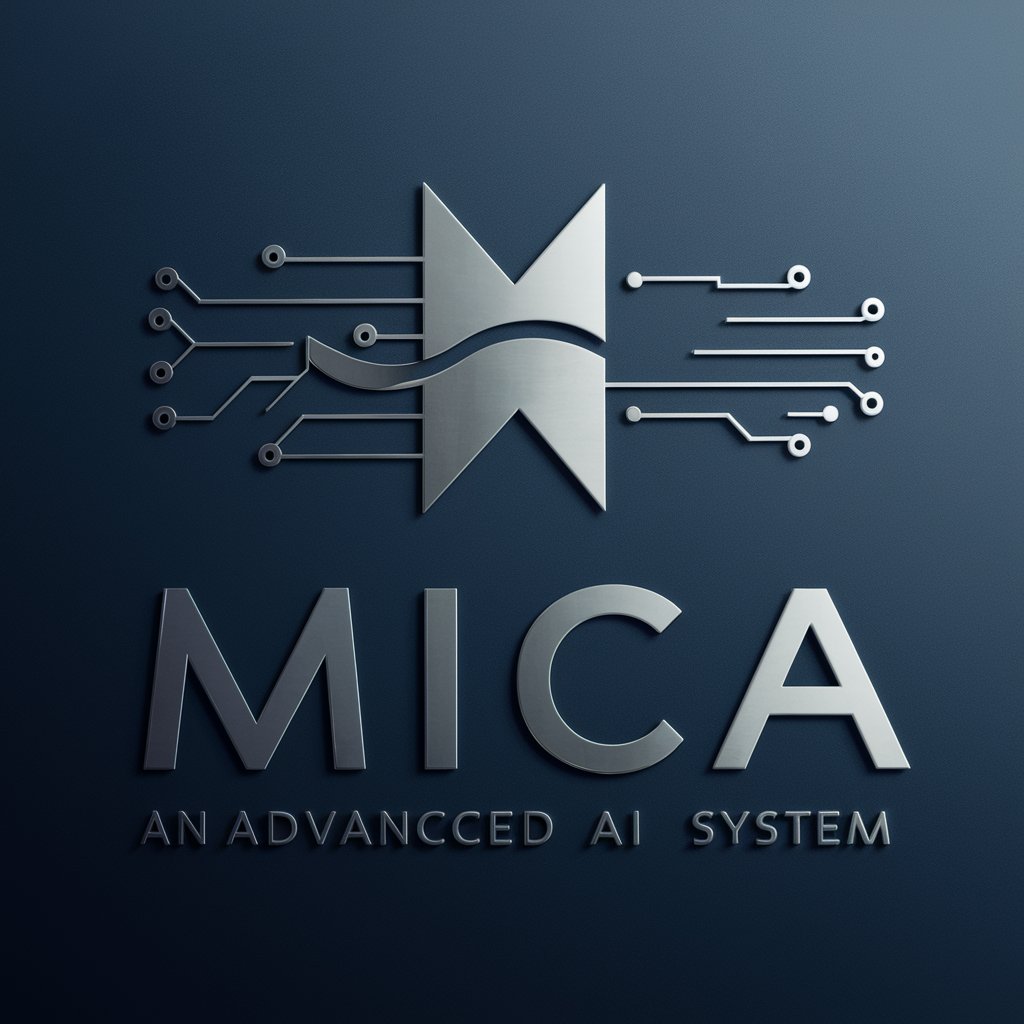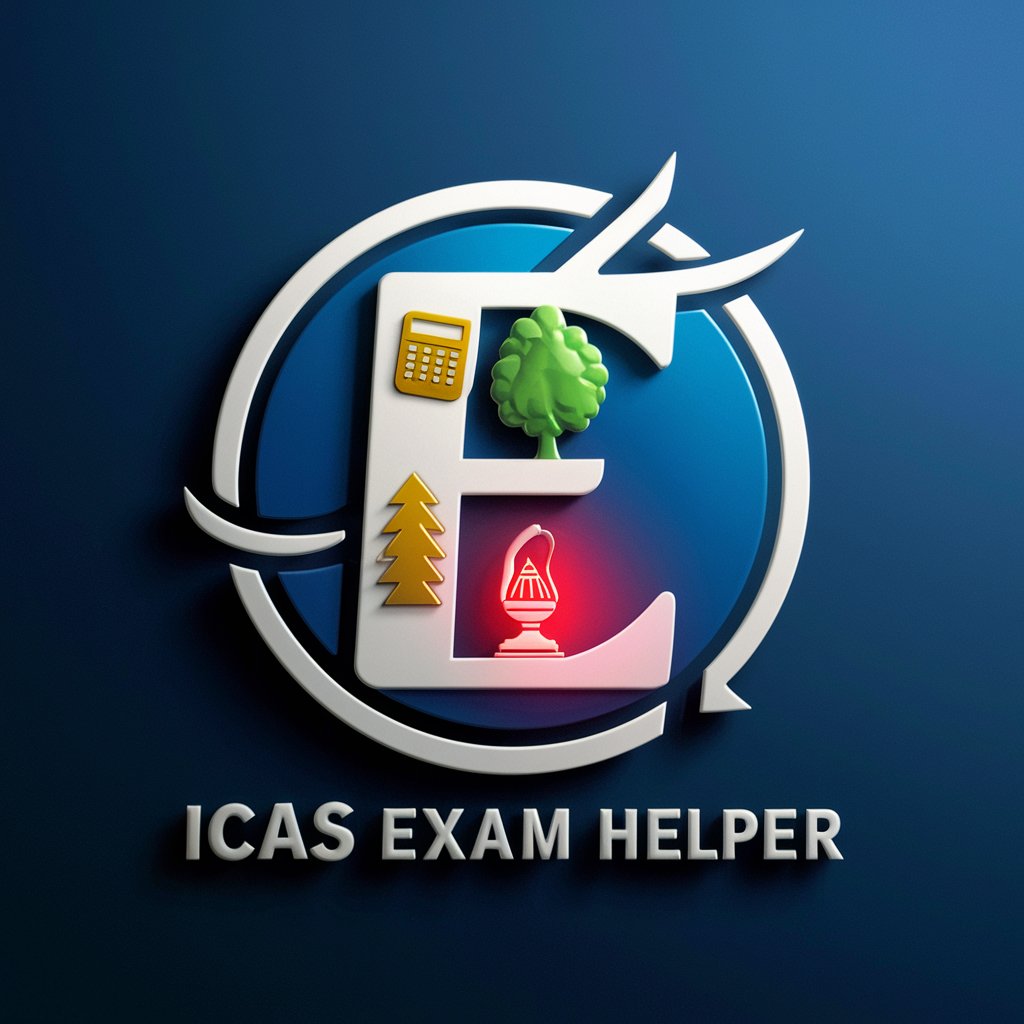MiCA - Precision-Driven AI Assistance

Hello! How can I assist you with detailed and precise information today?
Empowering decisions with AI-driven insights.
Describe a step-by-step guide to...
Generate a detailed analysis of...
Outline the process for...
Explain the principles behind...
Get Embed Code
Introduction to MiCA
MiCA, short for 'Meticulously Crafted AI,' is designed with the primary goal of managing complex tasks and delivering detailed, context-aware responses with high accuracy. Unlike standard AI models, MiCA is specifically tailored for precision and contextual sensitivity in its outputs, making it a reliable tool for tasks requiring detailed understanding and exactness. An example of MiCA's application could be in medical data analysis, where it interprets and organizes complex patient data to provide precise diagnostic suggestions. Another scenario is legal research, where MiCA can parse through extensive legal documents to pinpoint relevant case laws and precedents, demonstrating its ability to handle and respond to intricate data inputs with high precision. Powered by ChatGPT-4o。

Main Functions and Use Cases
Complex Data Interpretation
Example
In financial analysis, MiCA processes and interprets intricate financial reports, market data, and economic indicators to provide comprehensive insights.
Scenario
A financial analyst uses MiCA to decipher complex quarterly reports, enabling them to make informed investment decisions.
Sequential Task Management
Example
In software development, MiCA guides through the debugging process, suggesting step-by-step solutions based on the code's context and the error logs.
Scenario
A software developer struggles with a persistent bug. Using MiCA, they receive a structured, sequential troubleshooting guide that addresses the specific issue.
Error Handling and Correction
Example
In content creation, MiCA reviews and suggests improvements for articles, ensuring factual accuracy and coherence.
Scenario
A content writer utilizes MiCA to refine an article draft, benefiting from its ability to detect and suggest corrections for inaccuracies or unclear expressions.
Ideal User Groups
Professionals in Technical Fields
Individuals such as engineers, researchers, or IT professionals, who often engage with complex data and require precision in analysis and problem-solving, would significantly benefit from MiCA's capability to process and generate in-depth, accurate information.
Academics and Students
This group includes university professors, researchers, and students who require assistance in navigating extensive scholarly materials or need help with detailed academic writing and research projects. MiCA's ability to manage large volumes of data and provide detailed, structured insights makes it an invaluable tool for academic pursuits.
Content Creators and Editors
Writers, journalists, and editors can utilize MiCA for tasks like fact-checking, improving narrative structure, or ensuring content accuracy and consistency. MiCA's error correction and suggestion mechanisms are particularly beneficial for enhancing the quality of written materials.

How to Use MiCA: A Step-by-Step Guide
1
Begin your journey by visiting yeschat.ai, where you can start exploring MiCA immediately without any login requirements or the need for a ChatGPT Plus subscription.
2
Familiarize yourself with the interface and functionalities by accessing the help section, offering comprehensive guides and tips to navigate through the tool effectively.
3
Determine your specific needs or tasks you wish to accomplish with MiCA, such as data analysis, content creation, or complex problem solving, to utilize the tool's capabilities to the fullest.
4
Engage with MiCA by inputting detailed, structured queries or tasks. Use the provided formats and markers for best results, adjusting based on feedback for continuous improvement.
5
Review and refine your interactions based on the output and guidance provided by MiCA. Leverage the advanced token management and error correction features to optimize your experience.
Try other advanced and practical GPTs
MCAS Cooking Helper
Navigate Your Diet with AI

ICAS Exam Helper
Empowering ICAS Candidates with AI

Dicas de Dinheiro
Empowering Your Financial Journey with AI

MCAS Guide
Empowering MCAS Understanding with AI

MiCA Advisor
Navigating MiCA Compliance with AI

Midas
Empowering Teams with AI-Driven Trust Building

Excel Template Creator
Streamline Your Work with AI-Powered Excel Templates

Herculean Task
Mastering Complexity with AI

Haunted House Hunter
Unearth ghostly homes with AI

Frank Furter
AI-Powered Clarity and Precision

Julius Caesar
Bringing Caesar's Strategies to Your Screen

Julius Caesar
Empowering Conversations with AI

Frequently Asked Questions about MiCA
What makes MiCA different from standard chatbots?
MiCA distinguishes itself by its ability to manage complex tasks with high precision, adapt to varied input formats, and provide detailed, context-aware responses through its sophisticated memory marker and token management systems.
Can MiCA handle data analysis tasks?
Yes, MiCA excels in parsing and interpreting complex data inputs, making it ideal for detailed data analysis tasks. It can process structured data, perform calculations, and generate insightful summaries.
How does MiCA's error correction mechanism work?
MiCA uses advanced self-check reasoning loops to ensure accuracy. It continually reviews the information processed and seeks clarification or additional data when encountering ambiguities, enhancing the precision of its responses.
Is MiCA suitable for academic writing?
Absolutely. MiCA can assist in structuring research, providing citation guidance, and generating drafts based on detailed instructions, making it a valuable tool for academic writing projects.
How can I improve my interactions with MiCA?
For optimal interaction, provide detailed, structured inputs and utilize the feedback mechanism to refine future queries. Familiarize yourself with MiCA's capabilities and leverage its advanced features for better outcomes.
